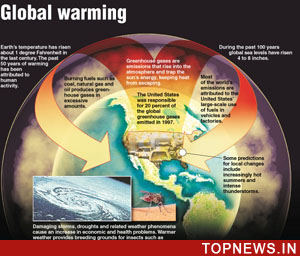Poor countries should receive between US$400 billion and US$2 trillion per year from rich countries by 2050 to help them cut greenhouse gas (GHG) emissions and fight climate crisis, finds a new paper published on March 16, 2015 by the Grantham Research Institute on Climate Change and the Environment and the ESRC Centre for Climate Change Economics and Policy at London School of Economics and Political Science.
The paper finds: By comparison, wealthier countries including the US, Japan and the EU members have promised to deliver an annual $100 billion by 2020.
“The climate finance goals to which high-income countries have committed are rather unambitious,” wrote the researchers in the study. “Transfers never exceed 1% to 2% of gross domestic product (GDP) for high-income country regions in any of the model projections. The cost to high-income countries, while substantial, is not likely to be prohibitive.”
The researchers, Alex Bowen, Emanuele Campiglio and Sara Herreras Martinez, used economic models to calculate the amount of money would need to be transferred between countries if the costs of cutting emissions to avoid climate crisis were paid for in an equal way depending on their national income.
Climate finance is a key element of negotiations among more than 190 nations as they try to devise by year-end a new agreement to fight climate change that will come into effect in 2020. Developing countries argue they need the cash to take expensive measures needed to both cut emissions and fight the effects of rising temperatures that are already being seen. Those include higher sea levels, more frequent droughts and heat waves.

